this is my first post here, so i'm sorry if i didn't follow the rules
i recently learned python, i know the basics and i like writing famous sets and plot them, i've wrote codes for the hofstadter sequence, a logistic sequence and succeeded in both
now i've tried writing mandelbrot's sequence without any complex parameters, but actually doing it "by hand"
for exemple if Z(n) is my complexe(x+iy) variable and C(n) my complexe number (c+ik)
i write the sequence as {x(n)=x(n-1)^2-y(n-1)^2+c ; y(n)=2.x(n-1).y(n-1)+c}
from math import *
import matplotlib.pyplot as plt
def mandel(p,u):
c=5
k=5
for i in range(p):
c=5
k=k-10/p
for n in range(p):
c=c-10/p
x=0
y=0
for m in range (u):
x=x*x-y*y + c
y=2*x*y + k
if sqrt(x*x+y*y)>2:
break
if sqrt(x*x+y*y)<2:
X=X+[c]
Y=Y+[k]
print (round((i/p)*100),"%")
return (plt.plot(X,Y,'.')),(plt.show())
p is the width and number of complexe parameters i want, u is the number of iterations
this is what i get as a result :

i think it's just a bit close to what i want.
now for my questions, how can i make the function faster? and how can i make it better ?
thanks a lot !